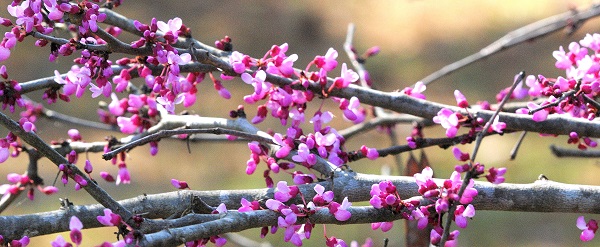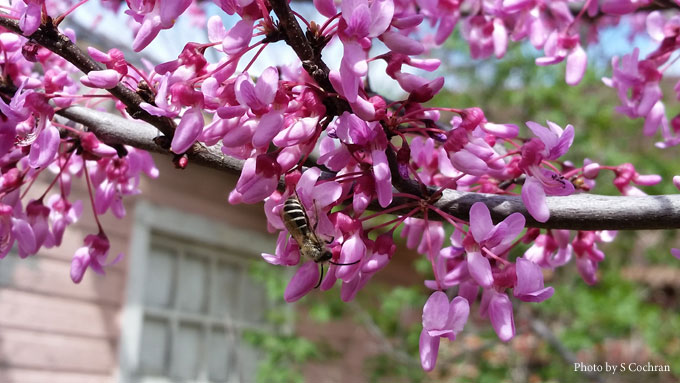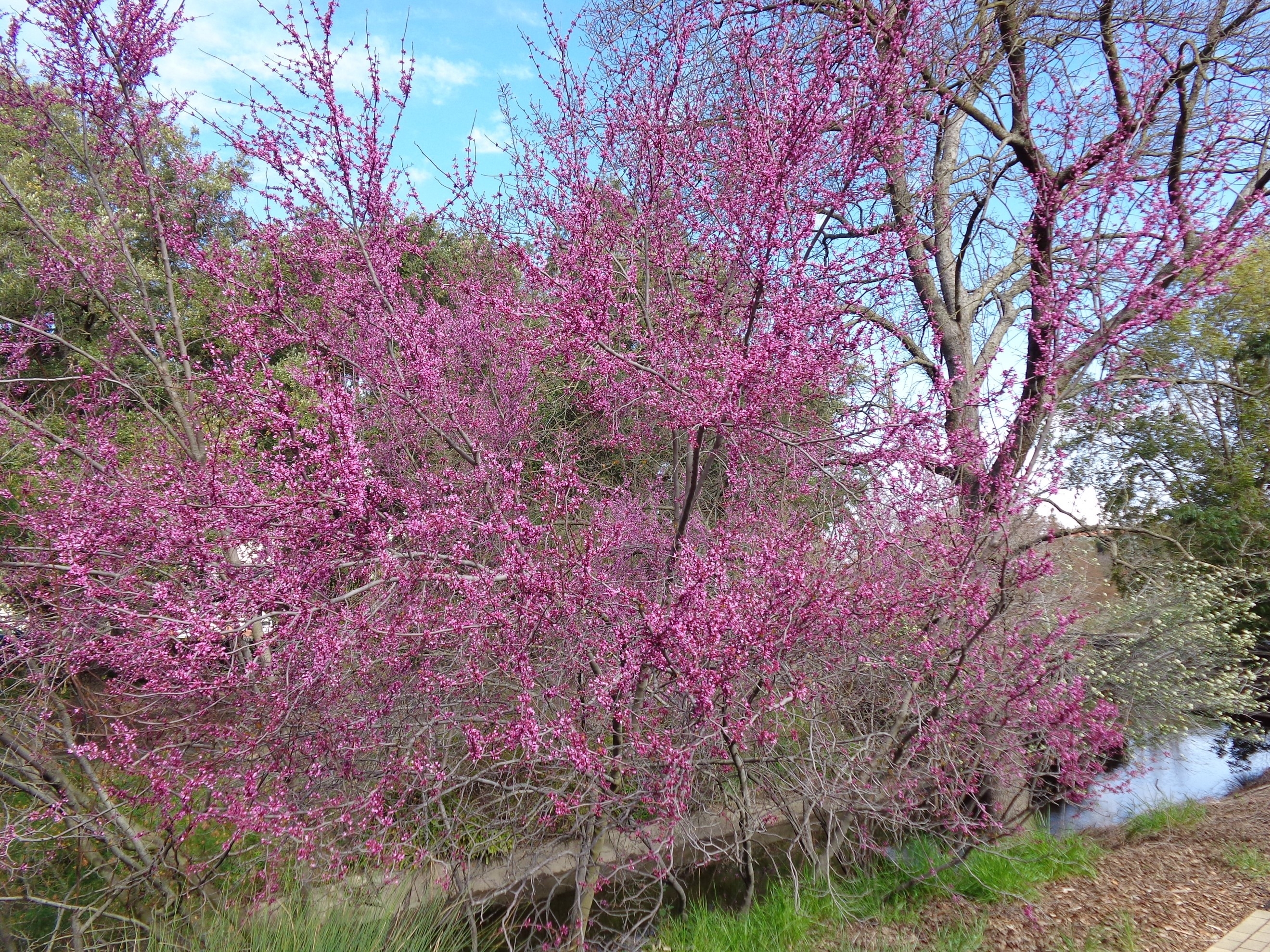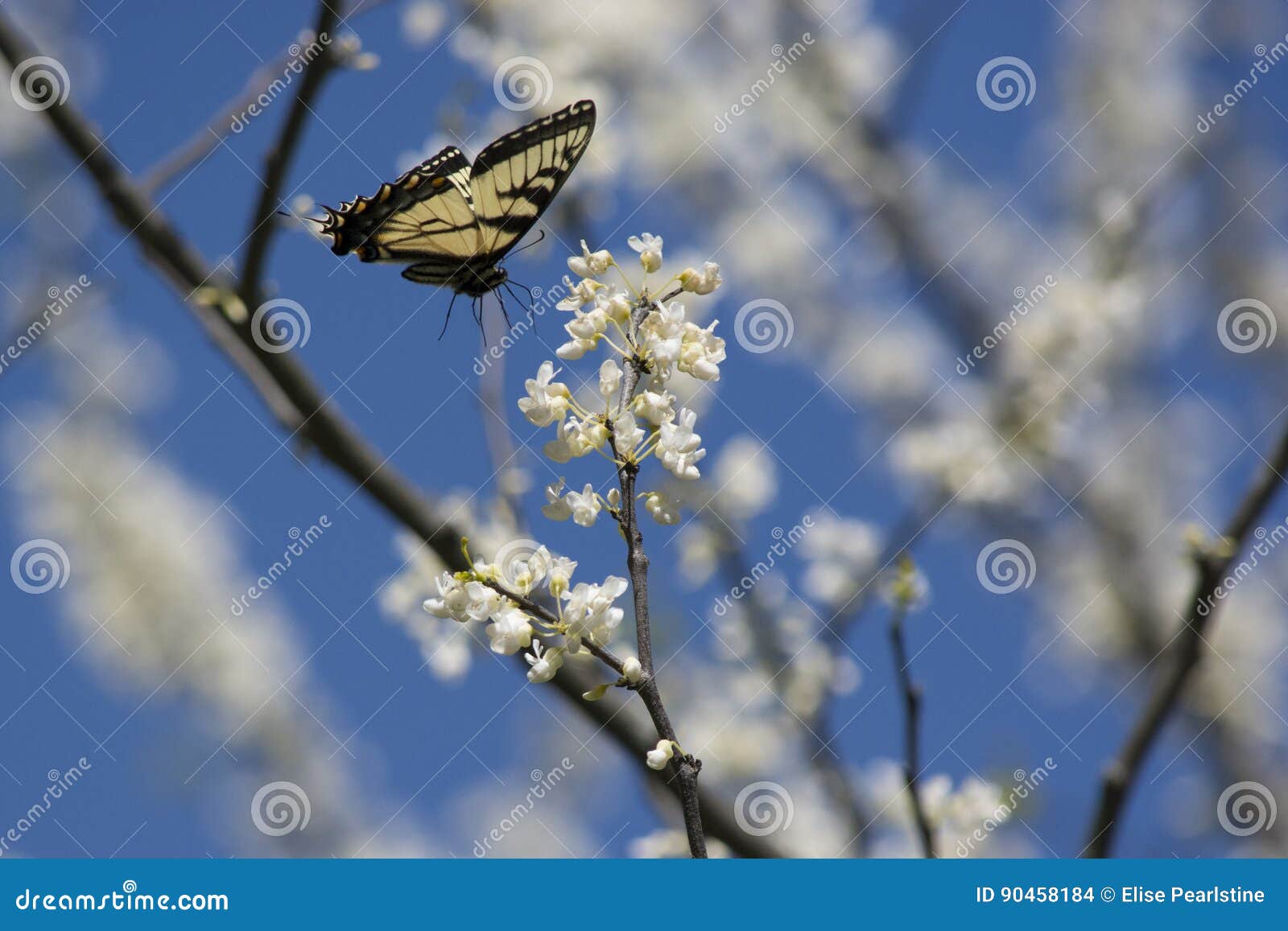
Attracting Pollinators With Redbuds: Boost Your Garden’s Biodiversity
Redbuds attract pollinators with their vibrant flowers and nectar. These trees are perfect for enhancing garden biodiversity.
Redbuds, known for their stunning pink and purple blossoms, play a crucial role in attracting pollinators like bees, butterflies, and hummingbirds. Their early spring blooms provide essential nectar sources, helping to sustain these vital creatures. Planting redbuds can significantly boost the health and vibrancy of your garden ecosystem.
These trees are not only beautiful but also easy to grow, making them an ideal choice for gardeners aiming to support pollinators. By incorporating redbuds into your landscape, you create a welcoming habitat for pollinators, promoting a healthy and thriving garden environment.

Credit: lancaster.unl.edu
Introduction To Redbuds
Redbuds are beautiful trees that attract many pollinators. Their vibrant flowers and unique features make them a garden favorite.
Origin And Characteristics
Redbuds belong to the Cercis genus. They are native to North America, Asia, and Europe. These trees are known for their heart-shaped leaves and pink to purple flowers.
Redbuds bloom in early spring. The flowers appear before the leaves, creating a stunning display.
There are several species of Redbuds. The most common is the Eastern Redbud (Cercis canadensis).
| Species | Native Region | Flower Color |
|---|---|---|
| Eastern Redbud | North America | Pink to Purple |
| Chinese Redbud | Asia | Pink |
| European Redbud | Europe | Pink |
Importance In Ecosystems
Redbuds play a vital role in ecosystems. They provide food and habitat for many species.
Bees, butterflies, and other insects visit Redbud flowers. These pollinators help in the reproduction of many plants.
Redbuds also offer shelter for small birds and animals. Their dense foliage and branches create safe nesting sites.
Planting Redbuds in your garden supports local wildlife. These trees contribute to a healthy and balanced ecosystem.
- Bees gather nectar from Redbud flowers.
- Butterflies use the flowers for feeding.
- Birds find shelter in the tree’s branches.
Choosing The Right Redbud
Attracting pollinators to your garden starts with choosing the right redbud. Redbuds are beautiful, flowering trees that draw bees, butterflies, and hummingbirds. Selecting the perfect variety ensures your garden thrives.
Varieties To Consider
There are many redbud varieties, each with unique features. Here are a few popular choices:
- Eastern Redbud (Cercis canadensis): Known for its pink flowers and heart-shaped leaves.
- Forest Pansy: Offers stunning purple foliage and bright pink blossoms.
- Texas Redbud: Has smaller leaves and can tolerate drought conditions.
- Mexican Redbud: Features smaller, glossy leaves and thrives in hot climates.
Climate And Soil Requirements
Redbuds grow best in specific climates and soil types. It’s essential to understand these requirements:
| Redbud Variety | Climate | Soil Type |
|---|---|---|
| Eastern Redbud | Temperate | Moist, well-drained |
| Forest Pansy | Temperate | Moist, well-drained |
| Texas Redbud | Hot, dry | Well-drained, sandy |
| Mexican Redbud | Hot | Well-drained, rocky |
Soil pH is also important. Redbuds prefer slightly acidic to neutral soil (pH 6.0-7.5).
Planting your redbud in the right conditions ensures a healthy tree. Healthy trees attract more pollinators.
Planting Redbuds
Redbuds are beautiful trees that attract pollinators to your garden. They add vibrant colors and support local ecosystems. This section guides you on planting redbuds effectively.
Site Selection
Choosing the right site for planting redbuds is crucial. Redbuds thrive in well-drained soil and areas with full to partial sun.
- Ensure the site gets at least 4-6 hours of sunlight daily.
- Check the soil’s drainage. Avoid waterlogged areas.
- Consider the tree’s mature size. Leave enough space for growth.
Redbuds prefer sheltered spots. This protects them from strong winds. Avoid planting near buildings or large trees that block sunlight.
Planting Techniques
Proper planting techniques ensure your redbuds grow healthy. Follow these steps:
- Dig a hole twice the width of the root ball.
- Make the hole as deep as the root ball.
- Place the tree in the hole. Ensure the root flare is level with the ground.
- Backfill the hole with soil. Gently tamp it down to remove air pockets.
- Water the tree thoroughly after planting.
Adding mulch around the base helps retain moisture. Keep the mulch 2-3 inches away from the trunk. This prevents rot and disease.
Water regularly during the first year. This helps establish the roots. After that, redbuds require less frequent watering.
| Task | Frequency |
|---|---|
| Watering | Weekly during the first year |
| Mulching | Annually |
| Pruning | As needed |
By following these steps, you ensure your redbuds grow strong and healthy. These beautiful trees will attract pollinators and enhance your garden’s beauty.

Credit: ucanr.edu
Caring For Redbuds
Redbuds are beautiful trees that attract pollinators like bees and butterflies. To keep them healthy, you need to care for them properly. Below are some tips to help you with watering, fertilizing, pruning, and maintenance.
Watering And Fertilizing
Redbuds need the right amount of water to thrive. Water them deeply once a week during dry spells. Make sure the soil stays moist but not soggy.
Fertilizing helps redbuds grow strong. Use a balanced fertilizer in early spring. Follow the instructions on the package for the right amount.
| Task | Frequency |
|---|---|
| Watering | Once a week (during dry periods) |
| Fertilizing | Early spring |
Pruning And Maintenance
Pruning helps redbuds stay healthy. Remove dead or diseased branches in late winter. This helps the tree grow better in spring.
Regular maintenance is key. Check for pests and diseases often. If you see any, treat them right away.
- Pruning: Late winter
- Check for pests: Regularly
- Treat diseases: Immediately
Pollinators Attracted To Redbuds
Redbud trees are not only beautiful but also attract numerous pollinators. These trees provide essential food and habitat for various insects. By planting redbuds in your garden, you support the ecosystem and help pollinators thrive.
Types Of Pollinators
Different types of pollinators visit redbud trees. These include bees, butterflies, and hummingbirds. Each type plays a unique role in pollination.
| Pollinator | Characteristics |
|---|---|
| Bees | Bees are the most common redbud pollinators. They are efficient and visit many flowers. |
| Butterflies | Butterflies add beauty to your garden. They prefer sunny spots and visit redbud flowers for nectar. |
| Hummingbirds | Hummingbirds are attracted to the vibrant flowers. They help pollinate while feeding on nectar. |
Role In Pollination
Pollinators play a crucial role in the life cycle of redbud trees. They transfer pollen from one flower to another. This process helps in the reproduction of plants.
- Bees collect pollen on their bodies and transfer it.
- Butterflies use their long proboscis to reach deep into flowers.
- Hummingbirds brush against the flowers while feeding.
By attracting these pollinators, redbuds ensure their own survival. This mutually beneficial relationship supports biodiversity in your garden.

Credit: www.dreamstime.com
Creating A Pollinator-friendly Garden
Creating a pollinator-friendly garden with redbuds can be fun and rewarding. Redbuds attract many pollinators like bees, butterflies, and hummingbirds. These small trees provide nectar and pollen, vital for pollinators. Enhancing your garden with redbuds can promote a healthy ecosystem.
Companion Plants
Pairing redbuds with the right companion plants boosts their effectiveness. Here are some excellent choices:
- Milkweed: Attracts monarch butterflies.
- Lavender: Loved by bees and butterflies.
- Salvia: Draws hummingbirds and bees.
- Black-eyed Susan: Attracts many pollinators.
- Yarrow: Beneficial for bees and beetles.
These plants offer extra nectar and pollen. They also add color and texture to your garden.
Garden Design Tips
Designing your garden to attract pollinators is simple. Follow these tips:
- Plant in Groups: Grouping plants makes it easier for pollinators to find them.
- Provide Water Sources: A shallow dish with water helps pollinators stay hydrated.
- Use Native Plants: Native plants are more attractive to local pollinators.
- Ensure Bloom Succession: Choose plants that bloom at different times. This ensures a continuous food source.
- Include Shelter: Provide areas for pollinators to hide and rest.
Following these tips will make your garden a pollinator haven. Your redbuds will thrive and so will the pollinators.
Benefits Of Biodiversity
Planting redbuds in your garden can attract pollinators, enhancing biodiversity. Biodiversity brings a range of benefits to your garden and the environment.
Ecological Advantages
Redbuds support various insects, birds, and small mammals. These creatures help pollinate plants and control pests. A diverse ecosystem is more resilient to changes. It can adapt better to environmental shifts. This reduces the need for chemical pesticides.
Pollinators like bees and butterflies thrive around redbuds. They help in the reproduction of many plants. This creates a balanced and healthy ecosystem.
Enhanced Garden Health
Redbuds improve soil health by fixing nitrogen. This enriches the soil and promotes plant growth. Healthy soil supports a wide range of plants.
Stronger plants resist diseases and pests better. They need fewer chemicals, creating a safer environment. Redbuds also offer shade, reducing water evaporation. This helps maintain moisture in the soil.
Here are some benefits in a tabular format:
| Benefit | Details |
|---|---|
| Pollinator Support | Attracts bees, butterflies, and birds |
| Soil Health | Improves soil nutrients and structure |
| Plant Resilience | Reduces need for pesticides |
| Water Conservation | Helps retain soil moisture |
Redbuds are a valuable addition to any garden. They support biodiversity and enhance garden health.
Seasonal Considerations
Attracting pollinators with redbuds requires understanding their seasonal needs. Different seasons demand different care. Knowing these needs helps your redbuds thrive.
Spring Blooming
Spring is the time for redbuds to bloom. Their pink flowers attract many pollinators. Bees and butterflies love these bright blooms.
For a healthy bloom, prune your redbuds in late winter. This encourages new growth and more flowers. Also, ensure they get enough water during dry spells. Mulch around the base to retain moisture.
Redbuds prefer full sun to partial shade in spring. They need at least six hours of sunlight daily. This ensures vibrant blooms that attract pollinators.
| Spring Care Tips |
|---|
| Prune in late winter |
| Water during dry spells |
| Mulch to retain moisture |
| Ensure 6 hours of sunlight |
Winter Care
Winter care is crucial for redbuds. Protect them from extreme cold. Use burlap or frost cloth to cover young trees. This prevents frost damage.
Watering is still important in winter. Ensure the soil is moist before the first frost. This helps the roots stay healthy. Avoid overwatering, as this can cause root rot.
Check for pests and diseases during winter. Treat any issues promptly to avoid damage. Inspect the branches and leaves regularly.
- Use burlap or frost cloth for protection.
- Keep soil moist before the first frost.
- Avoid overwatering to prevent root rot.
- Check for pests and diseases.
Common Issues And Solutions
Redbuds are excellent for attracting pollinators. But they can face some issues. Knowing the common problems and solutions ensures your redbuds thrive.
Pests And Diseases
Redbuds are generally hardy. Yet, they can fall prey to pests and diseases. Here are some common ones:
- Canker Disease: This is a fungal disease that affects the branches.
- Solution: Prune the affected branches. Ensure good air circulation.
- Verticillium Wilt: This soil-borne fungus causes wilting leaves.
- Solution: Remove infected plants. Avoid planting in the same spot.
- Leafhoppers: These insects suck the sap from the leaves.
- Solution: Use insecticidal soap. Encourage natural predators like ladybugs.
Troubleshooting Tips
Addressing issues early keeps your redbuds healthy. Here are some troubleshooting tips:
| Issue | Signs | Solution |
|---|---|---|
| Yellow Leaves | Leaves turning yellow and falling off. | Check for overwatering. Ensure proper drainage. |
| Stunted Growth | Plant not growing as expected. | Check soil quality. Add compost or fertilizer if needed. |
| Leaf Spots | Brown or black spots on leaves. | Apply a fungicide. Remove infected leaves. |
Regularly inspect your redbuds. Early detection and prompt action keep them healthy. Happy redbuds attract more pollinators, contributing to a vibrant garden.
Conclusion And Next Steps
Attracting pollinators to your garden with redbuds is a rewarding effort. These trees not only beautify your space but also support local wildlife. Let’s summarize the benefits and explore how you can encourage local biodiversity.
Summary Of Benefits
Redbuds offer many advantages for your garden and the environment:
- Beautiful Blooms: Redbuds produce stunning pink and purple flowers.
- Pollinator Attraction: They attract bees, butterflies, and hummingbirds.
- Low Maintenance: Redbuds are hardy and require minimal care.
- Shade and Shelter: These trees provide shade and shelter for small animals.
| Benefit | Description |
|---|---|
| Beautiful Blooms | Redbuds add vibrant color to your garden. |
| Pollinator Attraction | Bees, butterflies, and hummingbirds love redbud flowers. |
| Low Maintenance | These trees are easy to care for. |
| Shade and Shelter | They offer protection for small creatures. |
Encouraging Local Biodiversity
Planting redbuds supports local ecosystems and biodiversity:
- Select Native Varieties: Choose native redbud species for better growth and support of local wildlife.
- Create a Pollinator Garden: Combine redbuds with other pollinator-friendly plants.
- Avoid Pesticides: Use organic methods to keep your garden healthy.
- Provide Water Sources: Ensure there is water for bees and butterflies.
By planting redbuds, you make a positive impact on your local environment. Your garden becomes a haven for pollinators and other wildlife. Enjoy the beauty and benefits of these amazing trees!
Frequently Asked Questions
What Can I Plant Next To A Redbud Tree?
Plant hostas, ferns, and wildflowers next to a redbud tree. These plants thrive in partial shade and complement the tree.
Is Redbud Good For Bees?
Yes, redbud trees are excellent for bees. They provide early spring nectar and pollen, supporting bee populations.
Is Redbud A Host Plant For Butterflies?
Yes, redbud is a host plant for butterflies. It attracts various species, including the Henry’s Elfin butterfly.
Do Redbud Trees Attract Birds?
Yes, redbud trees attract birds. They provide shelter, nesting sites, and food. Birds enjoy their seeds and flowers. Redbuds enhance garden biodiversity.
Conclusion
Planting redbuds can transform your garden into a pollinator paradise. Their vibrant blooms attract bees, butterflies, and birds. This enhances biodiversity and supports local ecosystems. With minimal care, redbuds provide beauty and ecological benefits. Start your journey to a thriving, pollinator-friendly garden today.
Enjoy the natural beauty and the buzzing life it brings.

